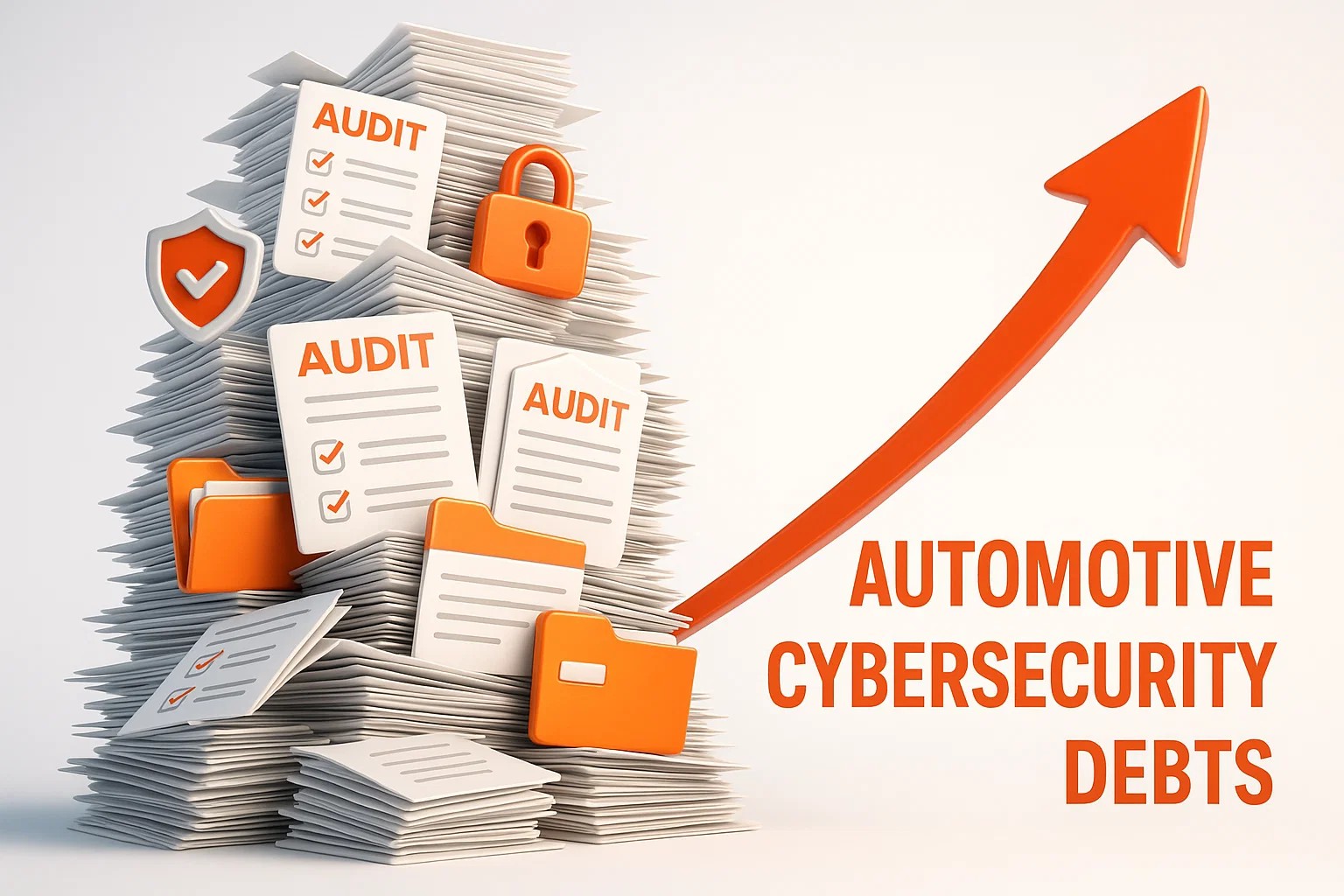
(This image is generated with AI)
Regulatory Complexity: Manual Work
Has Reached Its Limit
A new approach to automotive cybersecurity operations for long-term success
Software-Defined
Vehicles Reshape Cybersecurity Demands
As the
software-defined vehicle (SDV) becomes the new standard in mobility, regulatory
complexity is escalating rapidly. From UN R155 to the EU Cyber Resilience Act
(CRA), compliance is no longer a milestone but a continuous operational
requirement.
Cybersecurity
regulations don’t end with certification. The real game begins after it. They
require continuous, cumulative operations from development through
post-production.
Without an integrated security operations framework, long-term compliance is
unsustainable.
Why Manual Compliance Has Reached Its Limit
Despite the
evolving landscape, many automotive companies still rely on manual
documentation and siloed processes. These approaches often fall short when
facing the demands of:
- Continuous update cycles for
security artifacts
- Coordinated vulnerability
management
- Cross-functional audits and
regulatory reporting
A single
vehicle may generate thousands of security documents. All of them must be
consistently updated, versioned, and linked to risk management systems. This
isn’t just time-consuming. It also increases the risk of human error,
version mismatches, and ultimately, gaps in compliance and security.
What Companies Need: Integrated Security
Operations
Sustainable
compliance requires operational integration across functions from software
engineering and homologation to aftersales service. That includes:
- Automating repetitive
cybersecurity documentation
- Ensuring traceability across the
software supply chain
- Enhancing visibility into
vulnerabilities and incident response
Security is
no longer confined to engineering. It now demands long-term operational
readiness across all functions.
Case in Point: FESCARO's CSMS
Portal
FESCARO, a
trailblazer in end-to-end mobility cybersecurity, is accelerating its global
expansion with the CSMS Portal at the core of its strategy.
The CSMS
Portal acts as a gateway for automakers and their suppliers overwhelmed by
regulatory complexity: an all-in-one platform that automates automotive
cybersecurity operations.
Let’s break
down the key ways the CSMS Portal empowers mobility teams to streamline compliance
and strengthen security operations.
1.
Less
Effort, Lower Cost the More You Use It
A single
vehicle can generate more than 1,500 security documents, each requiring
constant updates.
The CSMS Portal automates these repetitive tasks, cutting resource use by up to
90%.
Once operational, it can be managed with just one-tenth of the initial
resources. This maximizes resource efficiency and enables costs to decrease as
usage increases.
2.
Knowledge
Base Built on Real-World Experience
FESCARO’s
strength lies beyond technology.
The ability to define “what” needs to be done,
supported by extensive collaboration with global OEMs and suppliers, has
created a robust knowledge base grounded in real-world automotive cybersecurity. This foundation sets the
CSMS Portal apart from off-the-shelf tools developed by general IT providers or
consulting firms, as it is purpose-built for the unique needs of the automotive
industry.
3.
Beyond
Operations: Advancing Security
Building a
cybersecurity management system from scratch can be outsourced,
but long-term success requires automakers and suppliers to drive their own security enhancement.
FESCARO delivers both a dedicated solution and strategic guidance for security
advancement, helping them build and strengthen compliance systems over time.
Start Your Global Vehicle Cybersecurity Compliance Journey with the CSMS Portal
The CSMS
Portal not only reduces operational burden but also transforms compliance into
a business booster.
Ready to
assess your readiness?
Contact
FESCARO today to see how the CSMS Portal can support your journey.
-
PREV [Contribution] Key management systems: The next frontier in automotive cybersecurity
-
NEXT No next post.